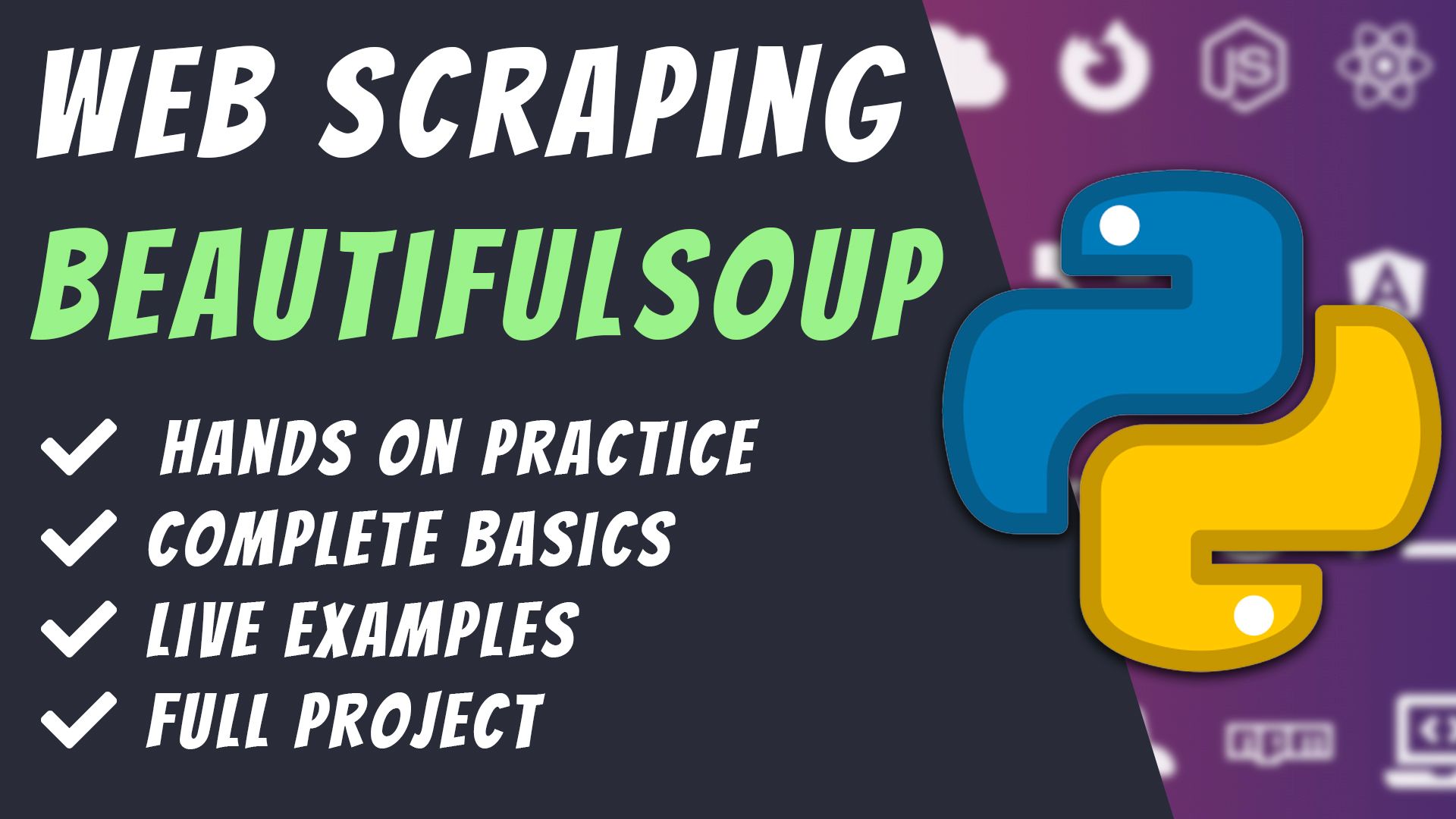
Introduction: Unleashing the Power of Web Scraping with Python
In the age of information, data has become an invaluable resource for individuals and organizations alike. One of the richest sources of data is the internet, hosting an incredible wealth of information spanning various domains. Web scraping, the process of extracting data from websites, has become an essential tool for data-driven decision-making, research, and analysis. In this comprehensive article, we will introduce beginners to web scraping using Python and Beautiful Soup, a powerful and user-friendly library for web scraping tasks.
1. What is Web Scraping?
Web scraping is the automated process of extracting data from websites. It involves sending HTTP requests to web servers, downloading the HTML content of web pages, and parsing the HTML to extract specific data elements. Web scraping is commonly used for various applications, such as data mining, data extraction, data analysis, and sentiment analysis.
2. Beautiful Soup: A Python Library for Web Scraping
Beautiful Soup is a popular Python library designed to make web scraping tasks quick and easy. Beautiful Soup parses HTML and XML documents, allowing users to navigate, search, and extract data from these documents with minimal code. It is widely used for web scraping because of its simplicity and ease of use.
3. Getting Started with Beautiful Soup
To get started with Beautiful Soup, you will need to have Python installed on your machine. You will also need to install the Beautiful Soup library and the requests library, which is used for sending HTTP requests. You can install these libraries using pip:
pip install beautifulsoup4
pip install requests
4. Web Scraping with Beautiful Soup and Python
In this section, we will walk through the process of web scraping using Beautiful Soup and Python, covering the essential steps involved in a typical web scraping project.
4.1 Sending HTTP Requests
The first step in web scraping is sending an HTTP request to the target website and downloading the HTML content. To do this, you can use the requests library in Python:
import requests
url = 'https://example.com'
response = requests.get(url)
html_content = response.text
4.2 Parsing HTML with Beautiful Soup
Once you have downloaded the HTML content of a web page, you can use Beautiful Soup to parse the HTML and create a navigable tree structure:
from bs4 import BeautifulSoup
soup = BeautifulSoup(html_content, ‘html.parser’)
4.3 Navigating and Searching the HTML Tree
Beautiful Soup provides various methods for navigating and searching the HTML tree. Some of the most common methods include:
– `find()`: Searches for the first matching element in the tree.
– `find_all()`: Searches for all matching elements in the tree.
– `select()`: Searches for elements using CSS selectors.
For example, to find all the paragraph elements in the HTML tree, you can use the `find_all()` method:
paragraphs = soup.find_all(‘p’)
4.4 Extracting Data from Elements
Once you have identified the elements you want to extract data from, you can use Beautiful Soup’s methods and attributes to access the data:
– `text`: Retrieves the text content of an element.
– `get()`: Retrieves the value of an element’s attribute.
For example, to extract the text content of a paragraph element, you can use the `text` attribute:
paragraph_text = paragraph.text
5. Web Scraping Best Practices and Ethical Considerations
While web scraping can be a powerful tool for extracting valuable information from the internet, it is important to follow best practices and consider the ethical implications of your actions:
– Always check the website’s terms of service and robots.txt file to ensure that you are allowed to scrape the site. Some websites explicitly prohibit web scraping, while others impose specific limitations and guidelines.
– Be respectful of the website’s server resources by implementing rate limiting and avoiding excessive requests in a short period. This helps prevent overloading the server and causing a negative impact on the website’s performance.
– Consider the privacy implications of web scraping, especially when dealing with personal data. Ensure that you adhere to relevant data protection laws and handle any sensitive information responsibly.
– When possible, use APIs (Application Programming Interfaces) provided by websites, as they are specifically designed for data extraction and are often more efficient and reliable than web scraping.
Summary
Web scraping is an essential skill for anyone looking to harness the vast amount of data available on the internet. Beautiful Soup and Python provide a powerful and user-friendly solution for web scraping tasks, enabling beginners to quickly and easily extract valuable information from websites.
By following the steps outlined in this comprehensive guide, beginners can learn how to send HTTP requests, parse HTML content, navigate and search the HTML tree, and extract data from elements using Beautiful Soup and Python. Additionally, by adhering to web scraping best practices and ethical considerations, beginners can ensure that they conduct their web scraping projects responsibly and effectively.
With a strong foundation in web scraping using Beautiful Soup and Python, beginners can unlock the full potential of the internet’s wealth of information, empowering them to make informed decisions, conduct research, and perform data-driven analysis across a wide range of domains.
